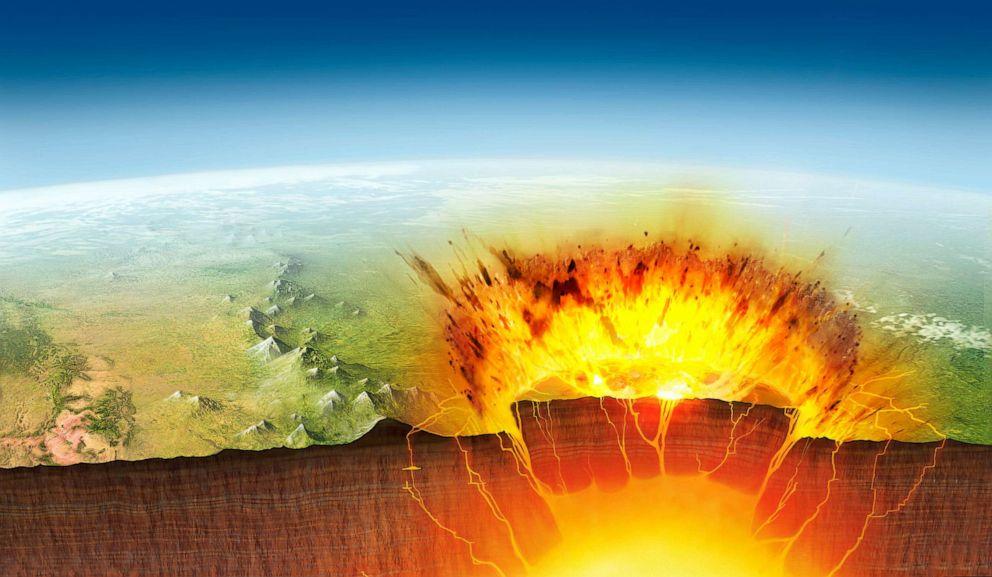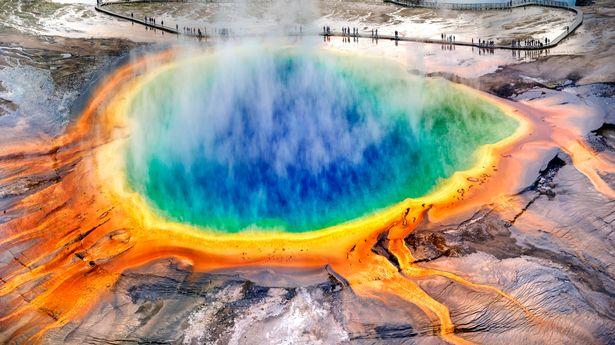Beneath the serene landscape of Yellowstone National Park, a slumbering giant stirs with primordial potential. Scientists have been peering into the depths of geological time, deciphering the cryptic signals of one of Earth’s most formidable volcanic systems. Recent research offers a chilling glimpse into the future, mapping out the probability of when this massive supervolcano might unleash its apocalyptic fury, transforming the tranquil wilderness into a canvas of geological transformation. As predictions emerge from complex data models and rigorous analysis, the world watches and waits, caught between scientific fascination and primal anticipation of nature’s most explosive capabilities. A recent scientific study has sent ripples through the geological community, offering new insights into the potential timeline of Yellowstone’s colossal supervolcano eruption. Researchers utilizing advanced computational models and geological data have mapped out a more precise prediction of when this dormant giant might awaken.
The massive volcanic system beneath Yellowstone National Park has a history of catastrophic eruptions that have dramatically reshaped landscapes and impacted global climate patterns. Previous eruptions occurred approximately 2.1 million, 1.3 million, and 640,000 years ago, creating a pattern that has long intrigued scientists and sparked public imagination.
Using sophisticated monitoring techniques, geologists have analyzed magma chamber dynamics, ground deformation, and seismic activity to refine their predictions. The study suggests that contrary to popular apocalyptic narratives, an eruption is not imminent in human timescales. Current estimates indicate a probability of around 0.00014% per year, translating to a remarkably low likelihood of a massive eruption in the near future.
The research team employed cutting-edge geological tracking methods, including satellite-based ground movement measurements and advanced thermal imaging. These techniques allow scientists to detect subtle changes in the volcanic system that might signal potential future activity.
Seismic sensors positioned throughout the Yellowstone region continuously monitor underground movements, providing real-time data about the supervolcano’s internal processes. The intricate network of monitoring equipment helps researchers understand the complex geological mechanisms beneath the park’s seemingly tranquil surface.
Interestingly, the study highlights that smaller eruptions and geological events are far more likely than a full-scale supereruption. Minor volcanic activities, such as localized lava flows or steam-driven explosions, could occur more frequently without causing widespread destruction.
The research also emphasizes the importance of continuous monitoring and advanced predictive models. While the chances of a massive eruption remain extremely low, understanding potential geological scenarios helps scientists and emergency planners prepare for various contingencies.
Geological experts caution against sensationalism, stressing that the Yellowstone supervolcano remains stable. The advanced computational models provide a nuanced perspective, demonstrating the complexity of predicting volcanic events.
The study represents a significant advancement in volcanology, offering unprecedented insights into one of the world’s most closely watched geological systems. By combining sophisticated technological approaches with deep geological understanding, researchers continue to unravel the mysteries of this extraordinary natural phenomenon.





